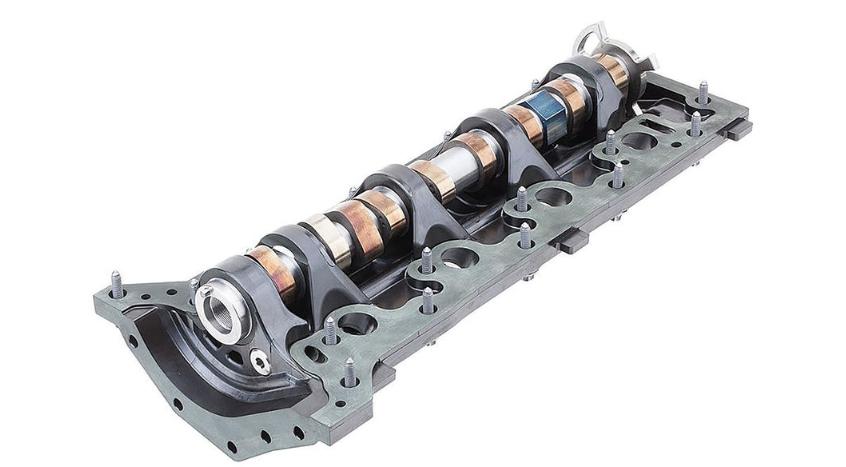Together with Mahle and Daimler, researchers at the Fraunhofer Institute have developed a new material for camshaft modules that should offer many advantages.
Are the days of the combustion engine numbered? Anyone who keeps track of how many innovations will continue to be developed for this type of drive quickly exposes the widely held thesis as exaggerated – if not completely wrong. Again and again, researchers are presenting innovations that make gasoline, diesel and gas engines stronger, more efficient – often even both.
Fiber-reinforced synthetic resin instead of aluminum
This includes the team at the Fraunhofer Institute for Chemical Technology (ICT). Together with Daimler, Mahle and other automotive suppliers, the scientists have developed a new type of camshaft module that is made of plastic instead of light metal. The module is an important part of the drive train, so stability is the most important requirement. Nevertheless, the Fraunhofer experts provide for the module, which serves as the housing for the camshaft, high-strength fiber-reinforced thermosets (synthetic resin) instead of aluminum.
That should bring several advantages. On the one hand, with the weight: “The camshaft module is located in the cylinder head, usually in the upper space of the drive train,” says Thomas Sorg, scientist at Fraunhofer ICT. “It is particularly useful here to reduce weight, since it enables the center of gravity to be lowered.” But that not only helps the driving dynamics. After all, weight loss is one of the most effective ways to reduce CO2 emissions from cars.
Cost and climate benefits
Although the part is lighter than an aluminum camshaft module, it should withstand high temperatures and the mechanical and chemical loads such as those caused by synthetic engine oils and coolants. The new development should also offer advantages in terms of noise development. Since plastics have good damping behavior, “the acoustic behavior of the camshaft module can be optimized very well,” explains Sorg.
However, the greatest benefit could arise on the cost side. Castings made of aluminum have to be reworked after casting, and their service life is limited. The post-processing effort of fiber-reinforced thermosets, however, is comparatively low. The advantage should continue in the engine plant: The camshaft module is made from one piece. This monolithic design enables the part to be delivered pre-assembled directly to the factory, where it can be mounted on the motor in a few simple steps. In addition, Fraunhofer ICT promises a significantly better durability of its new development.
After all, the climate should also benefit: Since aluminum is very energy-intensive to manufacture, the CO2 footprint of a camshaft module made of fiber-reinforced thermosets should be significantly lower.
